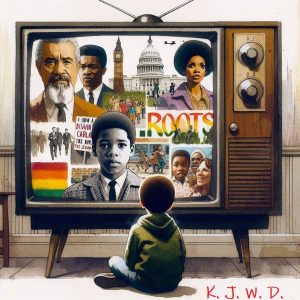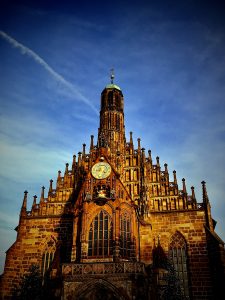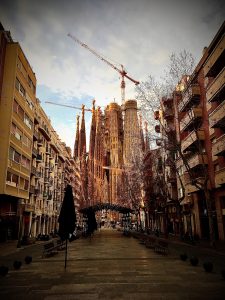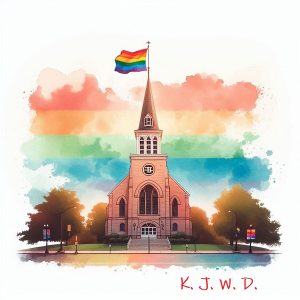Retrospect – My Caucasian Response To Affirmative Action
By Kevin J. W. Driscoll (c) 2025
Now, let me tell you, back in my day, the world was… simpler. Or at least, that’s what we told ourselves. You see, I was born in ’50s, which meant the ’60s hit me like a double shot of espresso. One minute, it’s ‘Leave It to Beaver,’ the next, everyone’s talking about ‘equal opportunity.’ Equal opportunity? I thought that’s what we already had!
See, in my little corner of the world, everyone looked like me. Everyone went to the same church, the same school, and, frankly, the same barber. Change was something you found in your pocket, not something you discussed at the dinner table. So, when the news started talking about ‘affirmative action,’ well, let’s just say it caused a bit of a stir at the Dorchester Yacht Club.
‘They’re gonna give them jobs just because… because of their skin color?’ Old Man Fitzwilliam sputtered, his face turning a shade of purple usually reserved for overripe plums. ‘Where’s the fairness in that?’
And, honestly, I kind of saw his point. I mean, I’d worked hard! I’d pulled myself up by my bootstraps, or at least, I’d watched my dad do it. The idea that someone might get a leg up based on anything other than sheer, unadulterated grit seemed… well, un-American.
We’d sit around the barbershop, the smell of talcum powder mixing with the faint scent of Brylcreem, and debate the finer points of this ‘affirmative action’ business. ‘It’s reverse discrimination!’ someone would declare, like it was a winning hand in a poker game. ‘They’re taking our jobs!’
Of course, no one could actually name a job they’d lost. It was more of a general feeling, a sense that the world was shifting under our feet, and not in a way we particularly liked. We used phrases like “those people” and “special treatment” often. It was a time of many catch phrases.
The college campuses were in an uproar, and we watched it on the nightly news, shaking our heads. The long hair, the protests, the whole ‘question authority’ thing—it was all very confusing. We were told to respect authority, and to get a job, and to buy a house, and to have 2.5 kids. And now the rules were changing?
And to be honest, I was a little nervous. I was just trying to get by, and now it looked like I had to learn a whole new set of rules. I was worried that “those people” were going to get all the jobs. It was a strange time. A time of change, and a time of worry. And a time of a lot of misinformation.”
Now, I’m not gonna lie, it took a while for the dust to settle. Old habits die hard, especially when they’re etched in the grooves of your upbringing like a favorite record. But life, like a good DJ, has a way of switching up the tracks.
Now, even though people were spouting off about ‘reverse discrimination’ and all that, deep down, something felt off. Like a radio station that wasn’t quite tuned in. I was still a kid, after all, and even kids can sense when something doesn’t add up.
See, my world was changing, whether I liked it or not. The schools started to integrate, and suddenly, there were kids in my class who looked different, talked different. And, yeah, at first, it was weird. I’d catch myself staring, or repeating some dumb joke I’d heard at the barbershop.
But kids are kids. We played kickball, we traded baseball cards, we argued about who was faster. And, slowly, those differences started to fade into the background. It wasn’t ‘the black kid’ or ‘the Mexican kid’ anymore. It was Tony, who could hit a curveball like nobody’s business, or Maria, who was the fastest runner in our grade.
Then there was the summer I worked at my uncle’s construction site. It was hot, sweaty work, and the guys on the crew were a mix of all sorts. There was Joe, a big, burly black guy who could lift a stack of lumber like it was nothing, and Miguel, a wiry dude from Puerto Rico who could fix anything with a roll of duct tape and a wink.
I learned more from those guys than I ever did from any textbook. I learned about hard work, about camaraderie, about respect. And I learned that skin color didn’t mean a damn thing when you were trying to get a job done.
One day, Joe pulls me aside, a serious look on his face. “Kid,” he says, “you got a good work ethic. But you gotta lose that attitude.”
Attitude? Me? I thought I was just being honest. But Joe explained how some of the things I said, the offhand comments, were hurtful. He wasn’t yelling, he wasn’t angry. He was just telling me straight. And for the first time, I really listened.
It wasn’t an overnight transformation. I still had my moments, still caught myself thinking old thoughts. But those moments were becoming fewer and farther between. The world was showing me that my old ways were wrong. And even though change was hard, it was also… necessary.
I started to see that ‘equal opportunity’ wasn’t about taking something away from me. It was about giving everyone a fair chance, a chance to prove themselves. And maybe, just maybe, that was something worth fighting for.
Now, growing up in the ’60s and ’70s wasn’t all about protests and anxieties. It was also about bell bottoms, platform shoes, and some pretty groovy TV shows. And those shows, well, they played their own small part in shaping my worldview.
Take “I Spy,” for instance. I mean, who didn’t love watching Robert Culp and Bill Cosby gallivanting around the globe, solving mysteries and trading witty banter? But what really struck me was the easy camaraderie between those two guys, a white guy and a black guy, working together as equals. It was subtle, but it was powerful.
Then there was “Roots.” I remember watching that miniseries with my family, the raw emotion of it all hitting me like a punch to the gut. It wasn’t just a story about slavery; it was a story about family, about resilience, about the shared humanity that connected us all, regardless of skin color.
And let’s not forget “Julia.” Now, I’ll admit, my main reason for watching that show was Diahann Carroll. I mean, she was stunning, with a smile that could melt glaciers. But the show itself was groundbreaking. Here was a black woman, a single mother, working as a nurse, living a normal life. It was a far cry from the stereotypes I’d been exposed to.
These shows, along with countless others, chipped away at my preconceived notions. They showed me that black people weren’t just maids, or criminals, or athletes. They were doctors, lawyers, teachers, mothers, fathers. They were just… people.
And as I got older, I started to see those same people in my own life. There was Mr. Johnson, the black principal at my high school, a man of quiet dignity and fierce intelligence. There was Mrs. Rodriguez, the latina woman who ran the local bakery, her pastries as sweet as her smile.
I realized that the world wasn’t as black and white as I’d once thought. It was a kaleidoscope of colors, each one beautiful and unique. And that diversity, well, it wasn’t something to be feared. It was something to be celebrated.
So, yeah, I grew up in a time of change, a time of uncertainty. But I also grew up in a time of incredible progress. And those TV shows, those subtle but powerful messages, they played their own part in helping me see the world in a whole new light.








